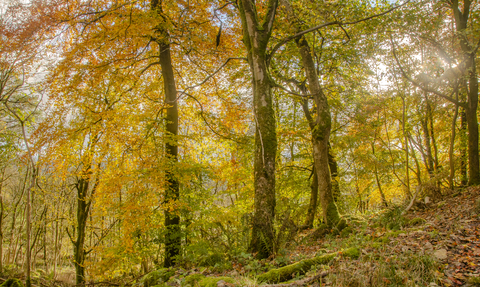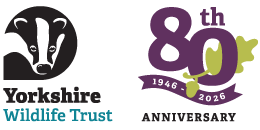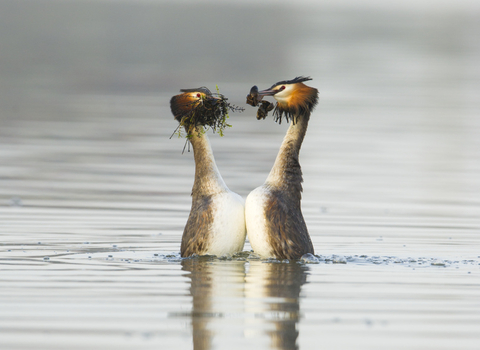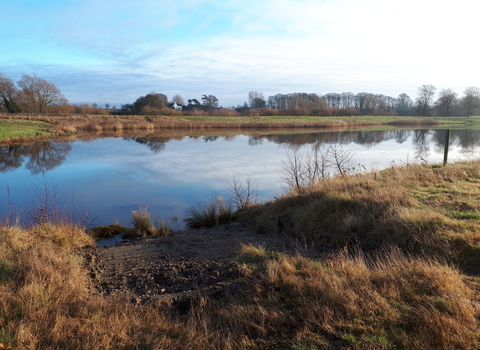Bolton-on-Swale Lake Nature Reserve
Know before you go
Dogs
When to visit
Opening times
Open at all times.We recommend a half day trip for this reserve.
Best time to visit
March to May, September to FebruaryAbout the reserve
Despite its proximity to the A1, this ever-improving reserve is a peaceful place where you can often spend time alone in nature. A little outside the north-eastern corner of the Yorkshire Dales, it’s one of our most northerly reserves. The lake was created as a result of sand and gravel quarrying and has been landscaped and flooded to create a suitable habitat for many wetland bird species. Trees and bushes around the northern end of the lake have increased the diversity of birdlife, and several islands in the lake have been cleared to create more breeding spaces for birds like oystercatchers and little ringed plovers.
Two hides give great views over the lake. Wading birds and wildfowl are the stars of the show, with huge numbers of ducks wintering here, including nationally important numbers of wigeon, along with goldeneye, pochard, tufted duck, teal and shoveler. Large numbers of curlews winter in the area, and can often be seen feeding on the grassland around the lake.
Contact us
Environmental designation
About
Bolton-on-Swale has been landscaped and floods, which provides suitable habitat for many wetland bird species.
Tree planting and scrub along the lake margin has also diversified the site for birds. During the winter months, the number of ducks and wading birds increase and nationally important numbers of wigeon visit the reserve. The wigeon are joined by goldeneye, pochard, tufted duck, lapwing, golden plover, teal and shoveler.
The wetland can attract some interesting passage migrants such as green sandpiper, arctic and black terns, greenshank and ruff in late summer/autumn.
Grass grazing is assisted by a large mixed flock of greylag and Canada geese.
The large islands in the lake are dominated by bushes and trees. Clearing will provide nesting opportunities for wading birds such as oystercatcher and other species. Great crested grebes, coots and moorhens also breed around the lake.
The grasslands around the lake are leased by a local sheep farmer. Access is available via the path to a hide and a screen, both with views over the main lake.
Seasonal highlights
- Spring: Birds - Oystercatcher; Common sandpiper; Sand martin; Yellow wagtail; Sedge warbler
- Summer: Invertebrates - Common darter; Birds - Lapwing; Green sandpiper; Greenshank; Ruff
- Autumn: Birds - Great crested grebe; Osprey; Green Sandpiper
- Winter: Birds - Wigeon; Shoveler; Pochard; Tufted duck; Curlew; Goldeneye
Directions
From the A1 travelling north enter Catterick and continue north on the A6136 keeping the racecourse on your left. Cross Catterick Bridge and after approximately ½ mile turn right at the cross roads onto the B6271 towards Bolton-on-Swale. Continue for 1½ miles to a road on the right, this is Back Lane which leads to the nature reserve car park. From Northallerton follow the B6271. Pass the signpost to North and South Ellerton on the left, continue for ½ mile to a signpost (Ellerton to Scorton). Fork left down Back Lane to reach the nature reserve car park.
Water Germander reintroduction
In 2023, the Trust began a project to reintroduce the exceptionally rare water germander to the lake edge of the nature reserve. This has involved planting along the muddy shore under license from Natural England.
The plants were grown from material collected from Kingfisher’s Bridge, near Ely in Cambridgeshire, and propagated by the Lower Ure Conservation Trust at Nosterfield Wetland Plant Nursery. Plants were put out in 2023, 2024 and 2025 and will now be monitored to assess their survival.
Due to the plant’s rarity, they have the highest level of protection under the Wildlife and Countryside Act. We ask visitors not to approach the water germander in order to make sure it has the best chance at survival!
Did you know?
We have erected a platform with an artificial nest to encourage ospreys to stay and breed.

The autumn colours were even more beautiful when the sun came out
Photo Credit - Telling our Story Volunteer, Sara


